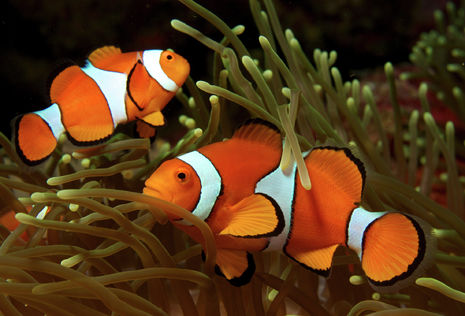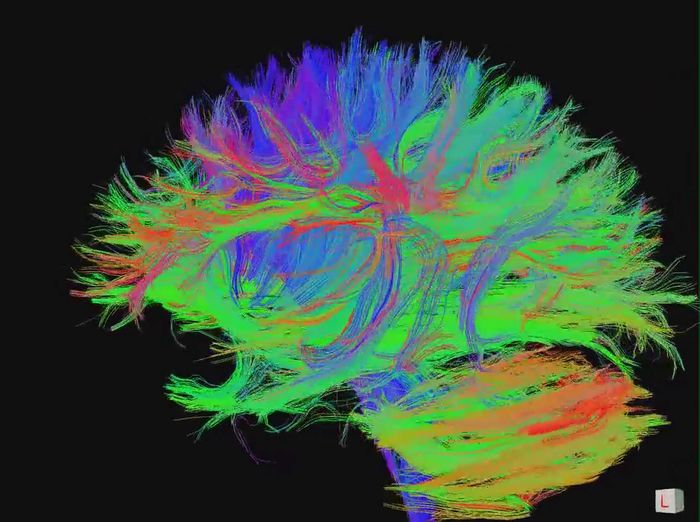Research Round-up: Week four
Ananya Vijay rounds up the latest research from Cambridge, from talking to cockroaches to reversing coral bleaching
Corals, cooling and clouds: protecting the Great Barrier Reef

Since 2016, the Great Barrier Reef has been subject to five mass bleaching events. This is in comparison to just two in the previous 30 years. Coral bleaching involves the loss of algae residing in the corals, which results in them losing their characteristic colour and turning a ghostly white. Due to the symbiotic nature of the relationship, if this is prolonged, the corals have a considerably lower chance of recuperation. A catalyst for this is extreme heatwaves, which are now occurring more often and at higher temperatures due to climate change.
Dr Dante McGrath, a postdoctoral researcher at the Centre for Climate Repair, cites watching Finding Nemo as a child as an inspiration for him to work on preserving the Great Barrier Reef. This fascination is echoed amongst millions of tourists worldwide, making the Great Barrier Reef a popular destination. However, its future is uncertain; McGrath believes coral bleaching means soon “the whole reef could be lost”. In order to prevent this, he is working on a technique called marine cloud brightening. This involves a salty mist being sprayed into the atmosphere, providing a cooling effect which offers relief to the reef, as clouds at a low altitude become more reflective, allowing a larger proportion of sunlight to be diverted into space.
"Marine cloud brightening is not without its controversy though, as it has the potential to affect weather patterns and climate on a large scale"
Marine cloud brightening is not without its controversy though, as it has the potential to affect weather patterns and climate on a large scale, therefore meaning it could cause a detrimental effect in regions where the technique is not being applied. Nevertheless, the work of McGrath and the RRAP team he is part of is concentrated in the microcosm of the Great Barrier Reef and therefore it does not pose such a great risk. However, they admit that this is somewhat a band-aid solution, as divesting from fossil fuels still needs to be the main focus in order to mitigate the effects of climate change. The team conducted their experiment by spraying plumes of salty mist from a boat for four to six hours, while utilising a drone and aircraft to collect data on cloud and atmospheric properties. While the results are yet to be evaluated, initial analysis suggests the plumes are hitting the low level clouds, which is extremely promising for the future of the Great Barrier Reef.
Cockroaches, conversations and collaboration: a night at the museum
The sense of attachment or contrition after seeing exhibits of publicly displayed skeletal or extinct animals is arguably rather transient. The University of Cambridge’s Museum of Zoology hopes to foster greater interest in the preservation of biodiversity by allowing visitors to have conversations with the exhibits, using AI. A collaborative effort with Nature Perspectives, the AI technology allows the animals to talk to visitors about themselves and answer their questions, adapting their register and approach depending on the demographic with which they are speaking. Some of the specimens include a dodo skeleton, a red admiral butterfly and an American cockroach. The focus is currently on observing how people interact with this technology, and whether it is effective at fostering an interest in nature, although the team hopes that in future it could be used to subvert common preconceptions about these animals. The co-founder of Nature Perspectives Gal Zanir desires this technology to be implemented as a representative of nature in “legal processes, policy-making and beyond”.
"The team hopes that in future [this technology] could be used to subvert common preconceptions about these animals"
Proteins, plasma and programming: weaponising T cells for cancer treatment
A new cancer treatment has potential to save the lives of people suffering with cancer who previously had little hope of recovery. Cancer cells are notoriously good at proliferating, undetected by the immune system. However, CAR-T cell therapy can cure more than double the number of patients suffering from particularly aggressive forms of cancer. The process involves T cells, a type of immune cell, being harvested from the blood, and then reprogrammed to carry a protein known as chimeric antigen receptor. This protein can recognise proteins specific to cancer cells and bind to them. The reprogrammed T cells are then multiplied and reintroduced into the bloodstream. As a result, when a modified cell detects a cancer cell, other parts of the immune system are signalled and they attack the cancer cell.
The treatment doesn’t show efficacy for some blood cancers. When treating myeloma, a cancer of the plasma, the CAR-T cells killed some healthy brain cells instead of cancerous cells. As a solution, Dr Mike Chapman, the brains behind the operation, proposes the idea of developing an “on-off gate”, which makes the CAR-T cell switch off if it detects a cell which should be left intact. However, the fact that with CAR-T therapy what is predicted “actually does happen” is extremely promising for the future of cancer treatment.
 News / Candidates clash over Chancellorship25 April 2025
News / Candidates clash over Chancellorship25 April 2025 Interviews / Dr Ally Louks on going viral for all the wrong reasons25 April 2025
Interviews / Dr Ally Louks on going viral for all the wrong reasons25 April 2025 Music / The pipes are calling: the life of a Cambridge Organ Scholar25 April 2025
Music / The pipes are calling: the life of a Cambridge Organ Scholar25 April 2025 News / Cambridge professor paid over $1 million for FBI intel since 199125 April 2025
News / Cambridge professor paid over $1 million for FBI intel since 199125 April 2025 Arts / Plays and playing truant: Stephen Fry’s Cambridge25 April 2025
Arts / Plays and playing truant: Stephen Fry’s Cambridge25 April 2025






